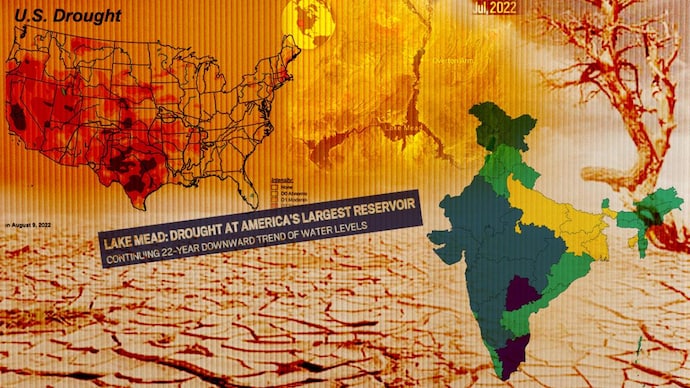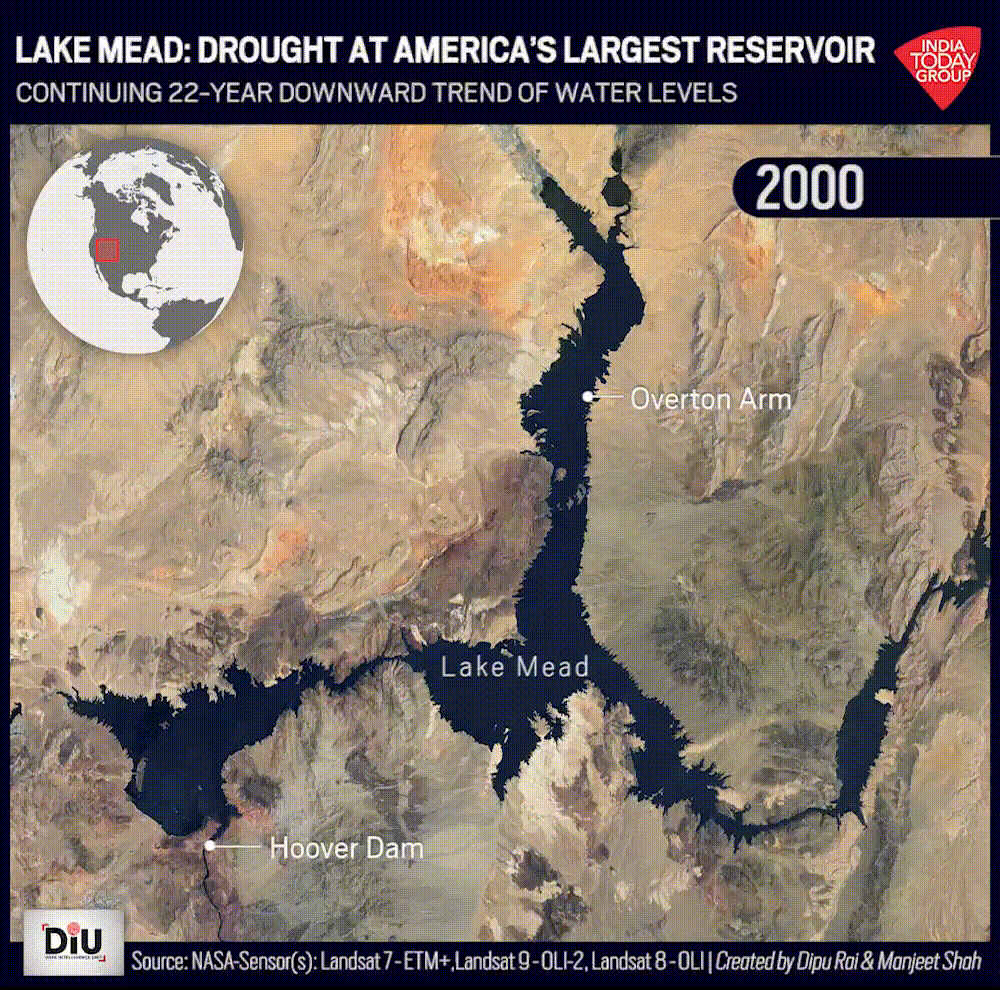More and more droughts: How both India and the world is getting affected and what it will lead to
The head of the UN Convention to Combat Desertification, Ibrahim Thiaw, has said that "Humanity is at a crossroads" when it comes to managing drought, and accelerating means of slowing it down must happen "urgently, using every tool we can.

Over a billion people are desperate for a thin layer of soil and a few millimetres of rain to survive. These places do not have enough moisture to plant crops and quench thirsty fields. Drought is looming in every corner of the world, including the densely populated regions of India.
- UP, Bihar, Jharkhand, and West Bengal — the major rice-producing states of India — are in the grips of drought in the absence of enough rain
- India has now entered the UN's Global Drought Vulnerability Index
- The US announced water cuts as rivers and lakes are hitting dangerous lows
- England had officially declared drought in many regions
- Companies have halted production in southwestern China after a drought caused hydropower shortages
- Somalia faces a famine after its worst drought in 40 years
- Chile started rationing water after its record-breaking 13th year of drought
"Humanity is at a crossroads" when it comes to managing drought, and accelerating means of slowing it down must happen "urgently, using every tool we can," said Ibrahim Thiaw, the head of the U.N. Convention to Combat Desertification (UNCCD).
Why this matters
About half of the planet's population (3.6 billion) lives in water-scarce regions. The consequent food and water crisis could be poised to drive up social unrest and massive migration. Such extended droughts also fuel the risk of wildfires.

How drought affects India
Many farmers in India's northeastern states are struggling. Some have lost entire rice crops. Others have delayed sowing. The precipitation of 2022’s monsoon has been poor so far in UP and Jharkhand. Uttar Pradesh received 44 per cent less rain than normal as of August 16. Bihar, Jharkhand, and West Bengal's situations also look grim, with an average of around 30 per cent less rainfall than usual.

The latest government data shows that the sowing area of rice has declined in India by 12 per cent compared to last year. Jharkhand, West Bengal, Bihar, and Uttar Pradesh account for most of the reduction. The major causes of droughts in India are precipitation deficiency.
India's drought-prone area has increased by 57 per cent since 1997. Drought has affected nearly two-thirds of the country from 2020 to 2022. Over the last decade, one-third of India's districts have experienced more than four droughts, and drought affects 50 million people each year.

The world
Extremely hot weather and very little rain have exposed many parts of the world to drought this year. Half of the U.S. and England are in a drought situation. According to new scientist magazine, Europe is experiencing the worst drought in 500 years, with river flows down by around a third on average.
Around a 29 per cent increase in the frequency and duration of droughts has been reported worldwide since 2000. According to a UN report, by 2030, drought will displace an estimated 700 million people worldwide.

Big Picture
According to the 2022 Drought in Numbers report released at the 15th Conference of Parties (CoP15) to the United Nations Convention to Combat Desertification (UNCCD), drought frequency and duration have increased alarmingly around the world since the turn of the century.
Droughts account for 15 per cent of natural disasters but result in the highest human toll — mortality related to droughts represents around 60 per cent of total deaths caused by extreme weather. From 1970 to 2019, droughts led to the deaths of approximately 650,000 people.
Usually, drought severely hits the poorest countries of the global south, but now, many wealthy countries of the global north including the US, the UK, and Spain, are experiencing the heat.
Over the past century, Africa has been affected by severe drought conditions more than any other continent — accounting for 44 per cent of the global total. But Europe has been increasingly feeling the effects, where 45 major drought events have impacted an average of 15 per cent of land and 17 per cent of its population.
The US is facing drastic water cuts from the Colorado River, which hit Arizona, Nevada, and New Mexico as drought deepens the water shortage.
What’s next?
According to the UN. report, global drought could impact more than 75 per cent of the world population by 2050 and around 4.8-5.7 billion living in water-scarce areas for at least one month each year. In addition, the UNCCD's second Global Land Outlook, released recently, estimates about 16 million square kilometres of land (the size of South America) will be degraded if current trends continue.
The combined occurrence of extreme droughts and flash floods across the globe is a grave sign, pointing towards a greater need to focus on better climate policy. For without significant global efforts to counter climate change, such extreme weather conditions will only increase in frequency and magnitude.
